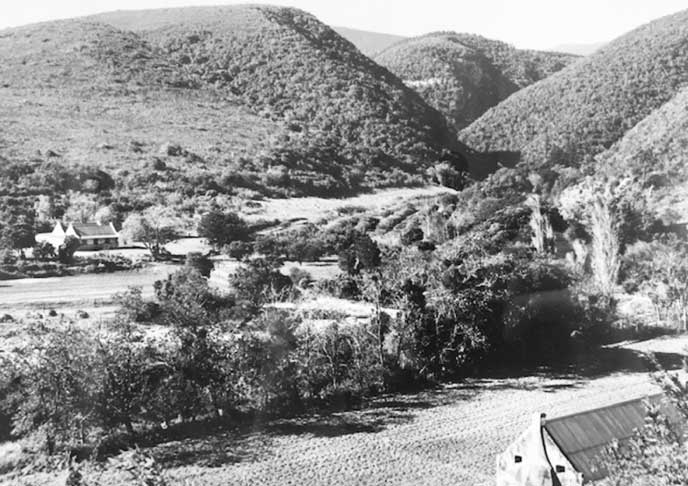OUR HISTORY
This historic jewel of a destination forms part of the world-famous Baviaanskloof route and is situated close to the hamlets of Loerie, Hankey, and Patensie.

It was here where the Williams families farmed and produced vegetables, fruits, and grains. The produce that was to be sold, had to be transported via an ox-wagon to Port Elizabeth.
This proved to be a challenging route, as the wagon had to be manoeuvred over high slopes and around sharp bends in the road. Later, however, a train station was built near Bergrivier, making the journey to Port Elizabeth more than a day shorter.

The Bergrivier area is known for its fynbos and luscious thickets, with beautiful stretches of heath that accompany several valleys and a native forest. Bergrivier is blessed with moderate weather and little wind, making it the perfect spot for a relaxing getaway throughout the year.
In 1832, William Williams left Bristol, England, and arrived and settled in Plettenberg Bay. In 1855, during the period of the diamond rush, William prospected on the Bergrivier farm. The little mine where he dug for coal can still be viewed today on the Red Route hiking trail. A family cemetery is home to five generations and is situated near the camping site.

The train was referred to by the apple farmers as the apple train in the 1900s, and so the Apple Express came to be–up until it stopped running in 2010. The farm was inherited by Japie Williams of the fourth generation in 1967 when his father passed away.
South African tourism had shown tremendous growth in the 1990s and the option became available to develop Bergrivier into an eco retreat. In 2004 Japie and his family moved to Bergrivier and he saw the potential of the 500-hectare land. With hard work and dedication, the Bergrivier Eco Retreat came into existence and now hosts guests from South Africa and other countries like Canada, England, Germany, and Holland.
